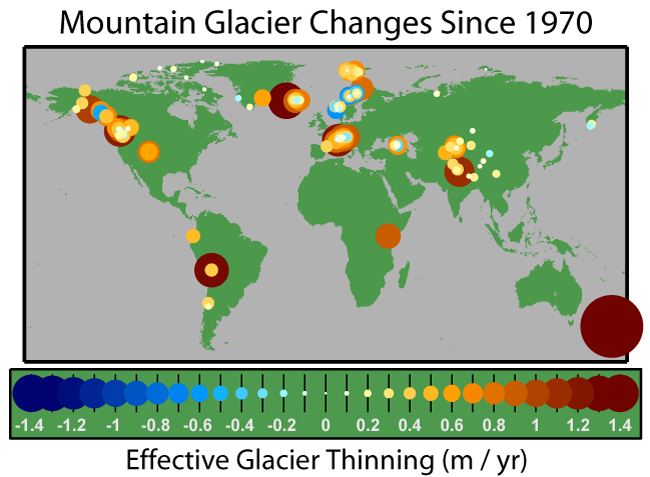File:Glacier Mass Balance Map.png
Glacier_Mass_Balance_Map.png (650 × 477 像素,檔案大小:75 KB,MIME 類型:image/png)
檔案歷史
點選日期/時間以檢視該時間的檔案版本。
| 日期/時間 | 縮圖 | 尺寸 | 用戶 | 備註 | |
|---|---|---|---|---|---|
| 目前 | 2016年10月2日 (日) 15:56 |  | 650 × 477(75 KB) | Cmdrjameson | Compressed with pngout. Reduced by 33kB (30% decrease). |
| 2006年4月10日 (一) 06:48 |  | 650 × 477(108 KB) | Pflatau | == Summary == The effective rate of change in glacier thickness, also known as the glaciological mass balance, is a measure of the average change in a glacier's thickness after correcting for changes in density associated with the compaction o |
檔案用途
下列2個頁面有用到此檔案:
全域檔案使用狀況
以下其他 wiki 使用了這個檔案:
- ar.wikipedia.org 的使用狀況
- cs.wikipedia.org 的使用狀況
- de.wikipedia.org 的使用狀況
- en.wikipedia.org 的使用狀況
- User:Dragons flight/Images
- Holocene glacial retreat
- Glacier mass balance
- Retreat of glaciers since 1850
- Talk:Retreat of glaciers since 1850/Archive 2
- Wikipedia:Reference desk/Archives/Science/2006 September 26
- Portal:Climate change/Selected panorama
- Portal:Climate change/Selected panorama/2
- User:Ctello2/sandbox
- es.wikipedia.org 的使用狀況
- eu.wikipedia.org 的使用狀況
- fi.wikipedia.org 的使用狀況
- fr.wikipedia.org 的使用狀況
- gl.wikipedia.org 的使用狀況
- gu.wikipedia.org 的使用狀況
- hi.wikipedia.org 的使用狀況
- hr.wikipedia.org 的使用狀況
- hu.wikipedia.org 的使用狀況
- hy.wikipedia.org 的使用狀況
- id.wikipedia.org 的使用狀況
- it.wikipedia.org 的使用狀況
- ja.wikipedia.org 的使用狀況
- mk.wikipedia.org 的使用狀況
- nl.wikipedia.org 的使用狀況
- pl.wikipedia.org 的使用狀況
- ru.wikipedia.org 的使用狀況
- sh.wikipedia.org 的使用狀況
- sr.wikipedia.org 的使用狀況
- sw.wikipedia.org 的使用狀況
- ta.wikipedia.org 的使用狀況
- tt.wikipedia.org 的使用狀況
- vi.wikipedia.org 的使用狀況



